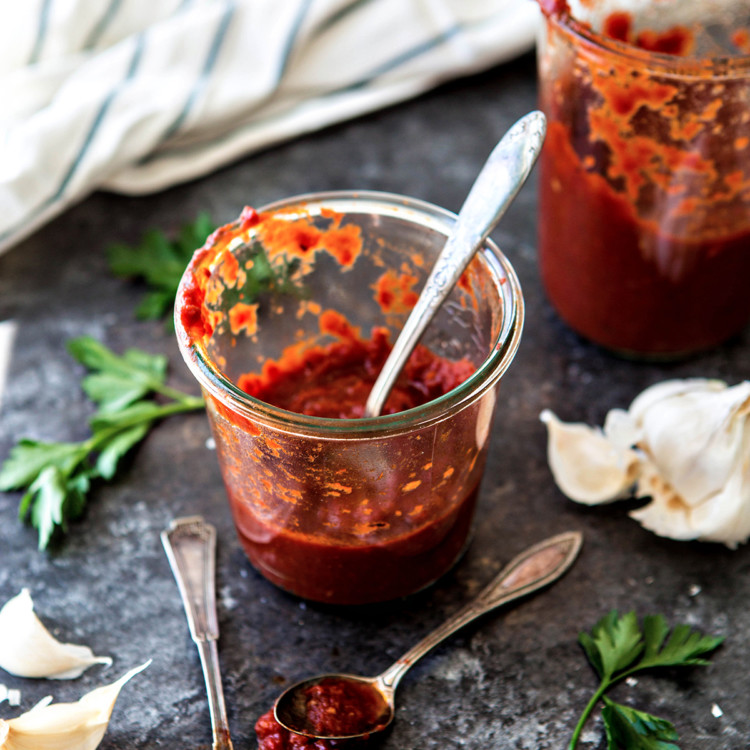
The Best Homemade Marinara Sauce
Looking for the Best Marinara Sauce Recipe? This is it! Slow-simmered all day with crushed tomatoes, extra-virgin olive oil, garlic, oregano, and a splash of red wine, this marinara sauce develops a deep, rich flavor that store-bought jars just can’t match. Whether you’re making a quick spaghetti dinner, meal prepping, or layering it into lasagna, this homemade sauce is simple, delicious, and worth the wait.

Why You’ll Love this Recipe
✔ Rich, Authentic Italian Flavor – Slow-cooked for deep, bold taste.
✔ Perfect for Meal Prep – Make a big batch and freeze for quick dinners.
✔ Versatile & Customizable – Use it for pasta, pizza, chicken parmesan, and more!
✔ Simple Ingredients, Incredible Taste – High-quality olive oil, garlic, and red wine take it to the next level.
The Story Behind the Best Marinara Sauce Recipe
Last week, we celebrated Kendall’s birthday with her favorite meal—Chicken Parmesan smothered in my homemade marinara sauce.
I breaded some chicken cutlets, layered them in a casserole dish with rich marinara, then topped them with Parmesan and fresh mozzarella. After baking until the cheese was perfectly bubbly, we served it alongside fresh pasta, a big Caesar salad (courtesy of my mother-in-law), and artisan bread with Grandma’s garlic butter.
Everyone was STUFFED after that meal—and needless to say, the birthday girl was pretty happy!
★★★★★
Reader Review
“Made a batch of this fabulous marinara – I cannot get enough of it! Had it with eggplant parmesan tonight. Previously made it into a meat sauce!! Leftovers going in freezer!! Thank you!”—Toby
Why This Really is the Best Sauce
You’ve probably seen so many recipes claiming to be the best marinara sauce recipe, but I promise you—this one truly delivers.
It’s slow-simmered all day, filling the kitchen with an incredible smell. I start cooking it in the morning after dropping the kids at school, and by the time they get home, they’re already begging for a taste.
In fact, if I ever left the pot unattended, I’m pretty sure I’d come back to half of what I started with—thanks to my kids “sampling” it straight from the pot with crackers when they think I’m not looking!
For years, I was burnt out on spaghetti night—probably because I grew up eating the same old jarred sauce every week. But this homemade marinara sauce changed everything. It’s rich, flavorful, and made with just a handful of simple, high-quality ingredients.
This post may include affiliate links. As an Amazon Associate and member of other affiliate programs, I earn a small commission from qualifying purchases.
Tools Needed to Make Marinara Sauce
Before you start making this classic marinara sauce, make sure you have the right kitchen tools on hand. Here’s what I recommend:
- Glass Measuring Cup – Perfect for measuring olive oil and red wine in this homemade sauce.
- Measuring Spoons – For precise seasoning measurements.
- Cutting Board & Sharp Knife – To chop fresh garlic and parsley for the best flavor.
- Can Opener – Essential for opening the cans of crushed tomatoes
- Large Heavy Bottom Stock Pot – I use my Le Creuset Enameled Cast-Iron 7-1/4-Quart Round French Oven for even heat distribution.
- Wooden Spoon – Ideal for stirring the red sauce as it slowly simmers.
Marinara Sauce Ingredients
Before you start, check your pantry and fridge for these simple ingredients. Most of them are kitchen staples, but using high-quality ingredients makes all the difference in flavor!
Remember: The FREE printable recipe card at the bottom of this post has exact measurements and step-by-step directions you’ll need to make a batch of this easy marinara sauce.
- Extra Virgin Olive Oil – Adds richness and depth of flavor.
- Garlic Cloves – Fresh garlic gives the sauce its bold, aromatic taste.
- Crushed Red Pepper Flakes – Adds a touch of heat (adjust to taste).
- Dried Oregano – Brings classic Italian seasoning to the sauce.
- Crushed Tomatoes – The base of this sauce—use high-quality canned tomatoes for the best results.
- Sea Salt – Enhances the natural flavors of the ingredients.
- Granulated Sugar – Just a pinch balances the acidity of the tomatoes.
- Red Wine – Deepens the flavor with a rich, slightly sweet undertone.
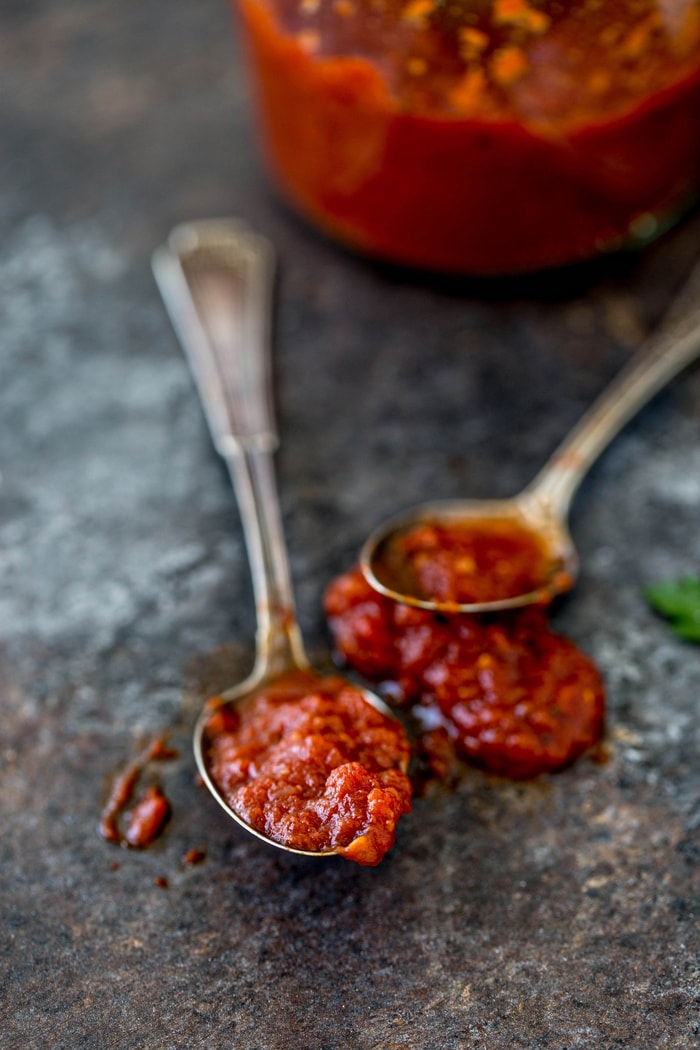
How to Make Marinara Sauce from Scratch
This classic marinara sauce may take time to cook, but it’s surprisingly hands-off—just let it simmer low and slow for the best flavor. Plus, your house will smell absolutely amazing while it cooks!
Here’s a quick overview of the recipe:
- Heat the Olive Oil – In a large heavy-bottomed pot, warm the extra-virgin olive oil over medium heat.
- Sauté the Aromatics – Add garlic, crushed red pepper, and dried oregano. Stir and cook for about 1 minute, until fragrant.
- Add the Tomatoes – Slowly pour in the crushed tomatoes, stirring after each addition to ensure everything blends smoothly.
- Season the Sauce – Stir in the sea salt, sugar, and red wine, allowing the flavors to combine.
- Simmer Low & Slow – Bring the sauce to a gentle simmer, then reduce the heat to low. Let it cook all day (6–8 hours), stirring occasionally. The longer it simmers, the richer the flavor!
Katie’s Note: Anytime I make this sauce, everyone who walks into the house immediately comments on how incredible it smells. Trust me—it’s worth the wait!
The above is simply a quick summary of this marinara sauce recipe. Check out the full recipe in the free printable recipe card at the bottom of this post for all the detailed instructions.
Tips for the Best Marinara
Use a Large Pot
- This recipe makes a big batch—you’ll be working with six cans of crushed tomatoes, red wine, and olive oil.
- Choose a large, heavy-bottomed pot (minimum 6 quarts) to allow room for stirring without overflowing.
High-Quality, Fresh Ingredients
- Use fresh garlic cloves instead of jarred garlic—it makes a huge difference in flavor!
- Pick a good-quality red wine—if you wouldn’t drink it, don’t cook with it. (Need help? Check out my Complete Guide to Cooking with Wine for tips!)
- Concerned about alcohol? Don’t worry—after 6–8 hours of simmering, it cooks off, leaving behind a deep, complex flavor.
Low & Slow is the Secret
- The longer it cooks, the better it tastes! Simmering for 6–8 hours instead of just a couple deepens the flavors of the tomatoes, garlic, and olive oil. This is why I always make a large batch—you’ll want leftovers!
Cook Once, Freeze for Later
- This marinara sauce freezes beautifully! After using some for dinner, I freeze the rest in portions for quick, easy meals later.
Recipe FAQs
Got questions about how to make the best marinara sauce? Here are answers to some commonly asked questions! If you have any others, drop them in the comments, and I’ll be happy to help.
What Are the Best Tomatoes for Marinara Sauce?
I prefer crushed tomatoes because they’re already finely chopped, making this recipe even easier. I typically buy high-quality brands based on what’s available at my grocery store:
For a while, my Costco carried Kirkland Signature San Marzano Tomatoes at a great price. Even though they were whole tomatoes rather than crushed, they worked well—I just chopped them finely before adding them to the sauce.
Can I Use Fresh Tomatoes Instead of Canned?
Yes! Fresh tomatoes work well, but they require extra prep before using them in this recipe.
How to Substitute Fresh Tomatoes:
- Blanch & Peel – Boil whole tomatoes for 30–60 seconds, then transfer to an ice bath. The skins should slide right off! See my full blanching guide here.
- Core & Remove Seeds – Cut out the core, scoop out the seeds, and discard.
- Finely Chop – Measure after prepping; you’ll need 168 ounces of fresh, prepped tomatoes.
- Choose the Right Tomatoes – Roma tomatoes (or other sauce-friendly varieties) work best because they have less water and more flesh.
Katie’s Tip: Fresh tomatoes contain more liquid than canned, so the sauce will need extra simmering time to thicken properly.
What Wine Should I Use for Marinara Sauce?
I recommend using an Italian red wine like Chianti or Sangiovese.
- Chianti – A classic Italian red made primarily from Sangiovese grapes. Its high acidity balances the tomatoes’ acidity and enhances the sauce’s flavor.
- Sangiovese – Known for its bold, fruity notes and rustic depth, this wine adds richness to the sauce.
Katie’s Tip: Both of these are food-friendly wines that pair perfectly with pasta, so go ahead—pour yourself a glass with dinner and make the most of that bottle you opened for cooking!
Can I Make This Marinara Sauce Without Wine?
Yes! While red wine adds depth and richness, you can absolutely make this marinara sauce without it.
Best Substitutes for Red Wine:
- Beef or Vegetable Broth – Adds a savory depth of flavor.
- Balsamic Vinegar (1 tablespoon) – Mimics the acidity of wine while adding complexity.
Will Omitting the Wine Change the Flavor?
The sauce will still be delicious, but the wine helps enhance the overall depth. If skipping it, consider letting the sauce simmer a little longer to develop deeper flavors naturally.
Can I Make This Marinara Sauce in a Slow Cooker?
Yes! If you prefer to let your sauce slow-simmer hands-free, you can use a slow cooker.
Here’s how:
- Follow the original stovetop steps up to bringing the tomato mixture to a simmer.
- Transfer to a slow cooker (6-quart or larger). If your slow cooker is smaller, scale down the recipe.
- Cook on LOW for 8 hours with the lid off to allow the sauce to thicken. Stir occasionally.
- Check on progress—if needed, turn to HIGH toward the end of cooking to help it reduce. Taste before serving and adjust seasoning as needed.
Why Keep the Lid Off? Unlike soups, marinara sauce needs to cook down and concentrate—which is why this is an all day marinara sauce—rather than absorb extra moisture from condensation. Keeping the lid off helps create a thicker, more flavorful sauce.
How to Store & Freeze Marinara Sauce
This marinara sauce recipe makes a big batch, so you’ll likely have leftovers! Here’s how to store them for later.
Fridge Storage (For Short-Term Use)
- Let the sauce cool completely before storing.
- Transfer to an airtight container or glass jar.
- Refrigerate for up to 5 days.
Katie’s Tip: Warm the sauce over medium-low heat on the stovetop or microwave in 30-second intervals, stirring in between.
How to Freeze Marinara Sauce (For Meal Prep or Leftovers)
This sauce freezes beautifully, making it a great option for meal prepping!
- Let it cool completely before freezing.
- Transfer to an airtight container, freezer-safe mason jar, or freezer bags.
If using freezer bags:
- Double bag for extra protection.
- Lay them flat so they freeze evenly and can be stored upright later.
- Label with the date and freeze for up to 3 months.
How to Thaw & Reheat:
- Stove: Reheat on the stovetop over medium-low heat, stirring occasionally.
- Fridge: Overnight in the fridge – Let it defrost gradually.
- Quick thaw method: Place the sealed bag in a bowl of cold water until softened.
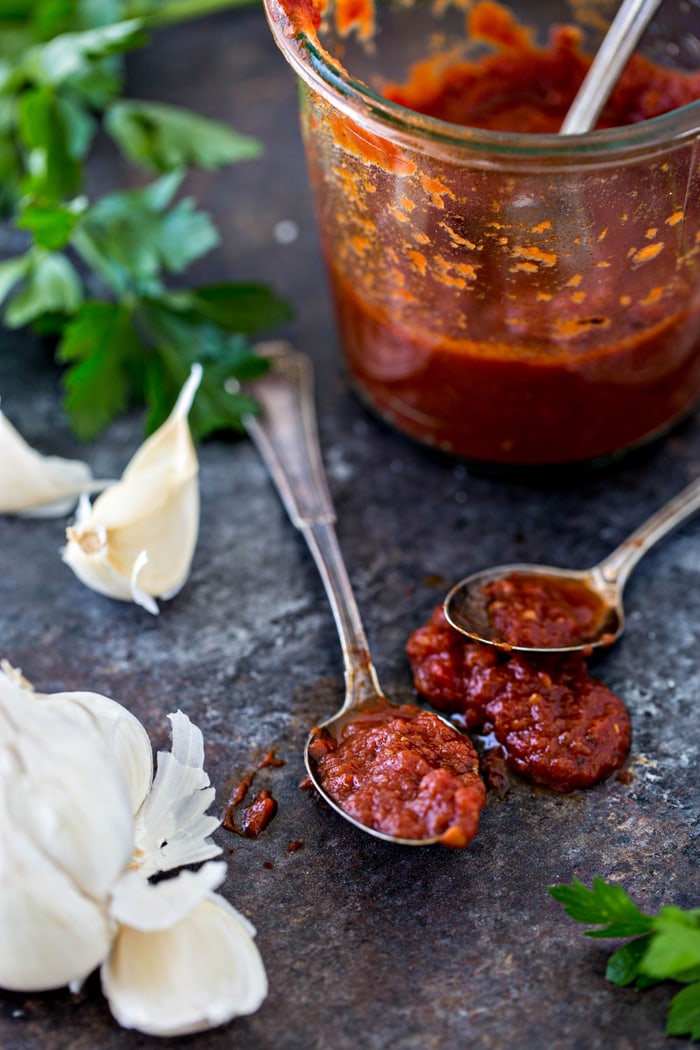
My Favorite Uses for this Homemade Marinara
One of the things that makes this the best marinara sauce recipe (besides the taste, obviously!) is its versatility.
Whether you’re using it as a pasta sauce, pizza base, or dipping sauce, it adds rich, slow-simmered flavor to every dish. You can also browse the recipe index for even more ideas!
Lasagna & Baked Pasta Dishes
- Spinach Lasagna Rolls: Rolled-up lasagna noodles filled with ricotta, spinach, and sun-dried tomatoes, then baked in marinara.
- Italian Sausage Lasagna Rolls: Lasagna noodles filled with a meaty ricotta mixture, rolled up, and baked in a hearty marinara sauce.
- Spinach & Mushroom Lasagna: A lighter take on lasagna with layers of spinach, mushrooms, and marinara sauce.
- Turkey & Sausage Lasagna: A classic lasagna made with a blend of turkey and Italian sausage for incredible flavor.
- Manicotti Primavera: Ricotta and fresh veggies are stuffed into manicotti shells, then smothered in marinara and baked.
Pizza & Handhelds
- Spinach and Ricotta Calzones: Serve this marinara as a dipping sauce for warm, cheesy calzones.
- Caprese Pizza: This pizza features marinara, fresh basil, tomatoes, and mozzarella on a homemade focaccia crust.
- Caramelized Onion Pizza: A unique take on pizza topped with red onions, roasted red peppers, and plenty of marinara.
Easy Weeknight Meals
- Chicken Parmesan: Spoon marinara over crispy breaded chicken, top with mozzarella, and bake until bubbly.
- Spaghetti Night: Brown ground beef and simmer it in marinara sauce for a quick, hearty dinner.
- Easy One Skillet Baked Ziti: Toss pasta with marinara, top with mozzarella, and bake for a bubbly, cheesy comfort meal—all in one pan!
- Cheesy Italian Sausage Gnocchi Bake: Gnocchi is tossed with marinara, sausage, and cheese for an easy one-pan meal.
Try this Homemade Sauce!
Next time you need a rich, flavorful pasta sauce, give this homemade marinara sauce a try!
Did you think it was the best marinara recipe? Leave a comment and review below to let me know what you thought. Your feedback helps others decide to try it, too!
Made this recipe? Snap a photo and tag me on Instagram @goodlifeeats and #goodlifeeatsrecipes. I’d love to see how you use this sauce!
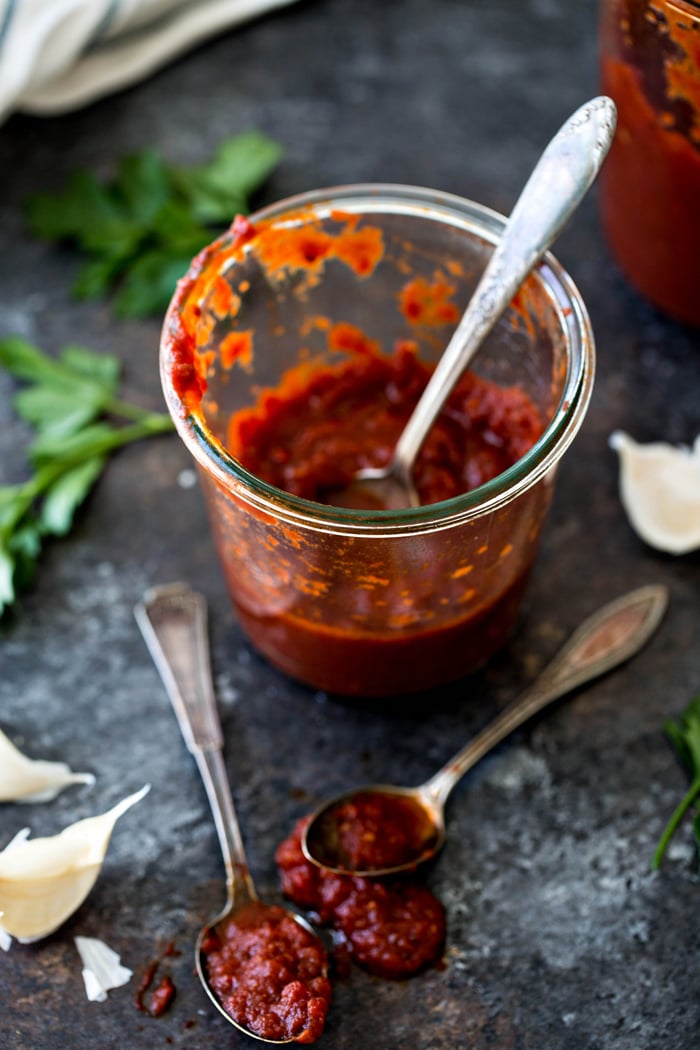
Stay Inspired in the Kitchen!
Want more delicious recipes, kitchen tips, and meal inspiration? Sign up for the Good Life Eats Newsletter and get:
✔ Tried-and-true recipes—from quick weeknight meals to special occasion favorites.
✔ Seasonal meal ideas—helping you make the most of fresh, in-season ingredients.
✔ Time-saving kitchen tips—boosting your confidence and creativity in the kitchen.
Have you ever made homemade marinara sauce?
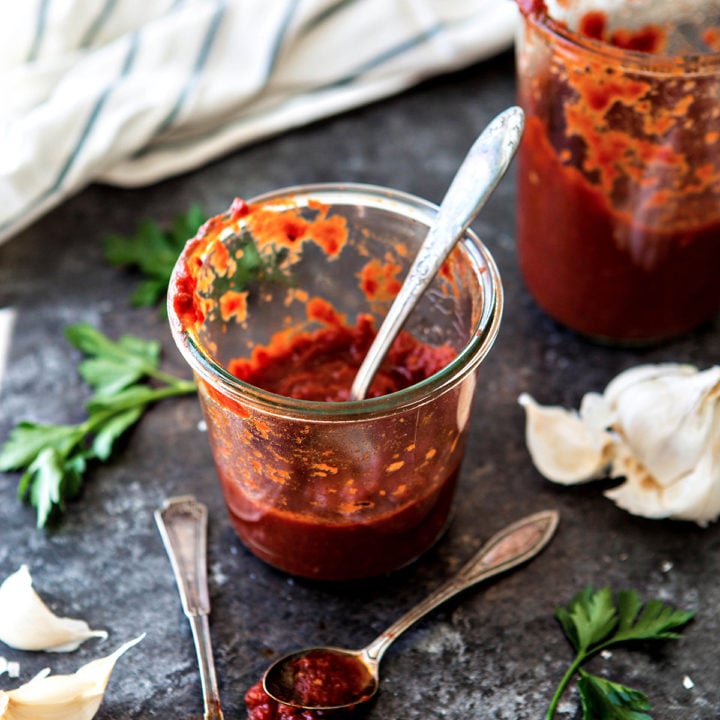
The Best Marinara Sauce Recipe
This Best Ever Homemade Classic Marinara Sauce is slow-simmered all day for an incredibly rich, authentic flavor. Made with crushed tomatoes, extra-virgin olive oil, oregano, crushed red pepper, garlic, and Italian red wine, this sauce is bold yet simple—perfect for pasta, pizza, and more!
Ingredients
- 1/2 cup Extra-Virgin Olive Oil
- 4 1/2 tablespoons minced Fresh Garlic Cloves
- 2 - 4 pinches Crushed Red Pepper Flakes
- 2 1/4 teaspoon dried Oregano
- 6 28-ounce cans Crushed Tomatoes (do not drain)
- 2 teaspoons Sea Salt
- 2 teaspoons Granulated Sugar
- 1 1/2 cup Chianti or Sangiovese Wine
Instructions
Sauté the Aromatics
- Heat the olive oil in a large, heavy-bottomed pot (at least 7 quarts) over medium heat.
- Add the garlic, crushed red pepper, and oregano.
- Sauté for 2–3 minutes, stirring frequently, until the garlic is fragrant but not browned.
Add the Tomatoes & Seasonings
- Slowly pour in the crushed tomatoes, one can at a time, stirring after each addition to fully incorporate.
- Once all tomatoes have been added, stir in the salt, sugar, and red wine.
- Use a wire whisk to mix everything well.
Simmer Low & Slow
- Bring the sauce to a gentle simmer over medium heat.
- Reduce the heat to low and let it cook uncovered for at least 6 hours, ideally 8 hours.
- Stir every hour with a wooden spoon, scraping the bottom of the pot to prevent burning.
Final Adjustments & Serving
- Taste the sauce before serving. If needed, add up to 1 more teaspoon of salt, depending on how much it has reduced.
- Use immediately or let cool completely before storing. This sauce freezes well for future meals!
Notes
Katie’s Tips for Success
- Use a Large Pot – This makes a big batch, so a 7-quart or larger pot works best.
- No Lid Needed – Simmer uncovered to let the sauce thicken and concentrate in flavor.
- Perfect for Meal Prep – Store leftovers in the fridge for up to 5 days or freeze for up to 3 months.
How to Freeze Marinara Sauce
- Let the sauce cool completely, then transfer to freezer-safe containers or zip-top bags (quart or gallon size).
- For bags – Seal tightly, double bag for extra protection, and lay flat to freeze. Label with contents and date.
- Portion Sizes – A quart-sized bag holds ~4 cups, and a gallon-sized bag holds ~16 cups. Freeze in portions that fit your family’s needs.
FAQs Covered in the Post
If you have questions about making this homemade marinara sauce, check out the FAQ section in the post where I cover:
- What are the best tomatoes for marinara sauce?
- Can I use fresh tomatoes instead of canned?
- What wine should I use for marinara sauce?
- Can I make this marinara sauce without wine?
- Can I make this marinara sauce in a slow cooker?
Recommended Products
As an Amazon Associate and member of other affiliate programs, I earn from qualifying purchases.
Nutrition Information:
Yield: 16 Serving Size: 1Amount Per Serving: Calories: 185Total Fat: 8gSaturated Fat: 1gTrans Fat: 0gUnsaturated Fat: 6gCholesterol: 0mgSodium: 819mgCarbohydrates: 24gFiber: 6gSugar: 14gProtein: 5g
GoodLifeEats.com offers recipe nutritional information as a courtesy and is an estimate only. This information comes from online calculators. Although GoodLifeEats.com makes every effort to provide accurate information, these figures are only estimates.
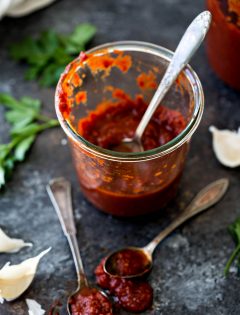
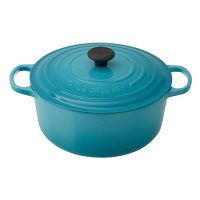
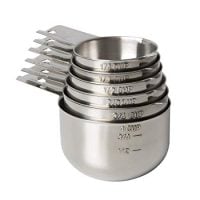
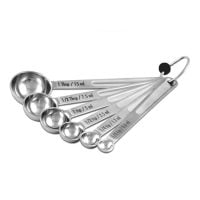
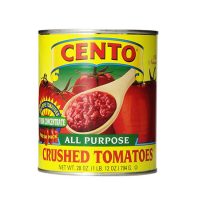
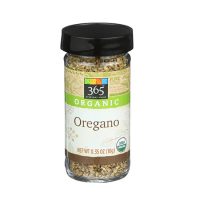
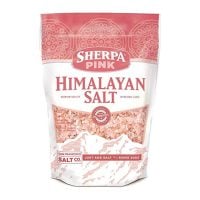
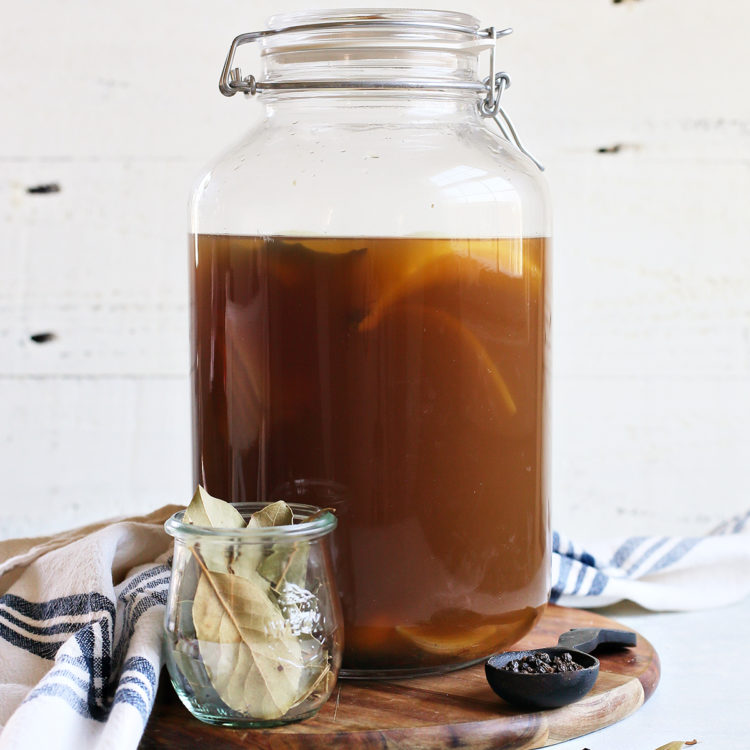
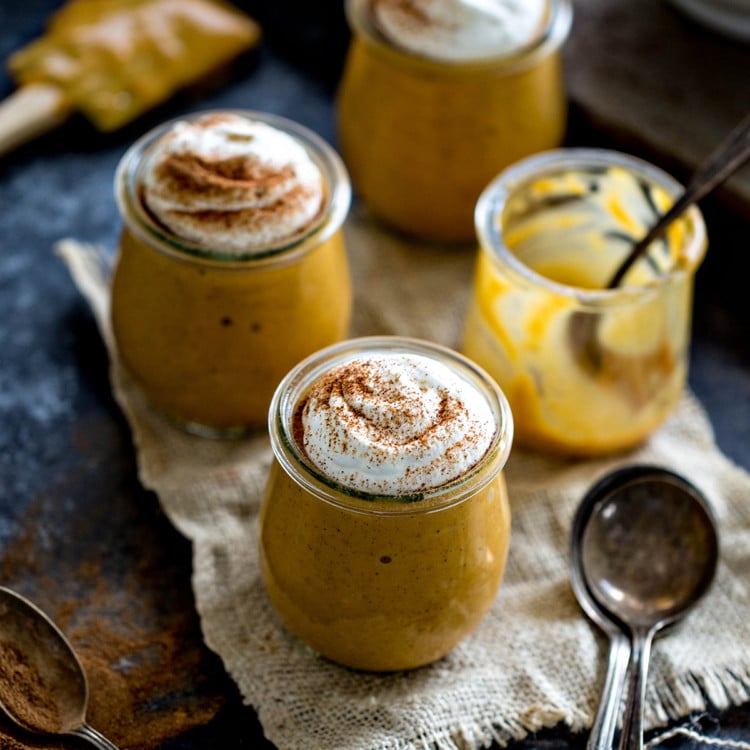
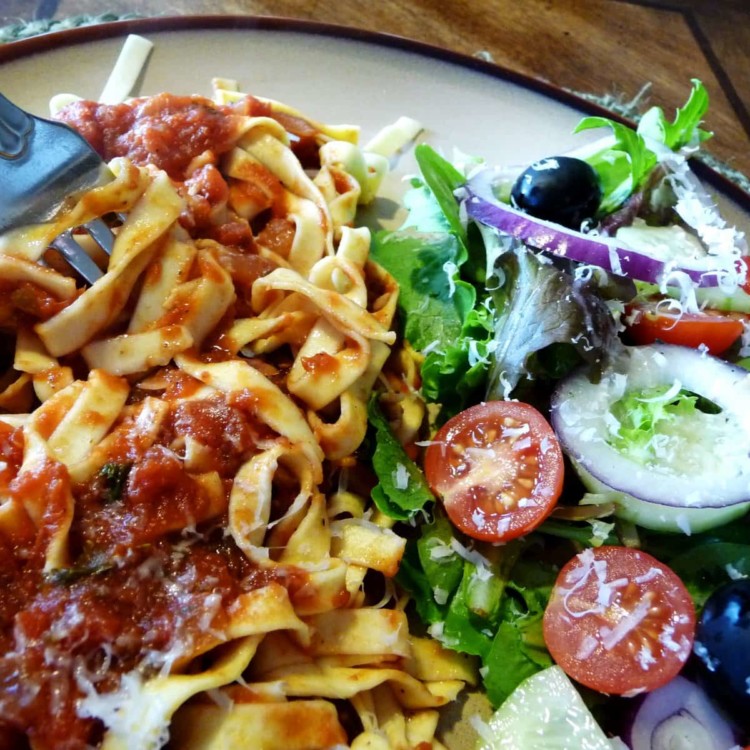
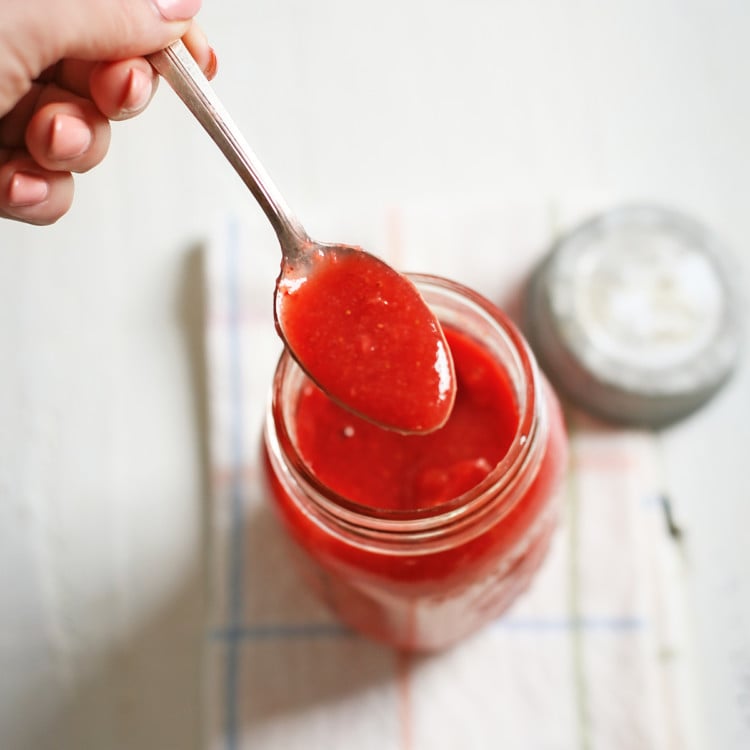
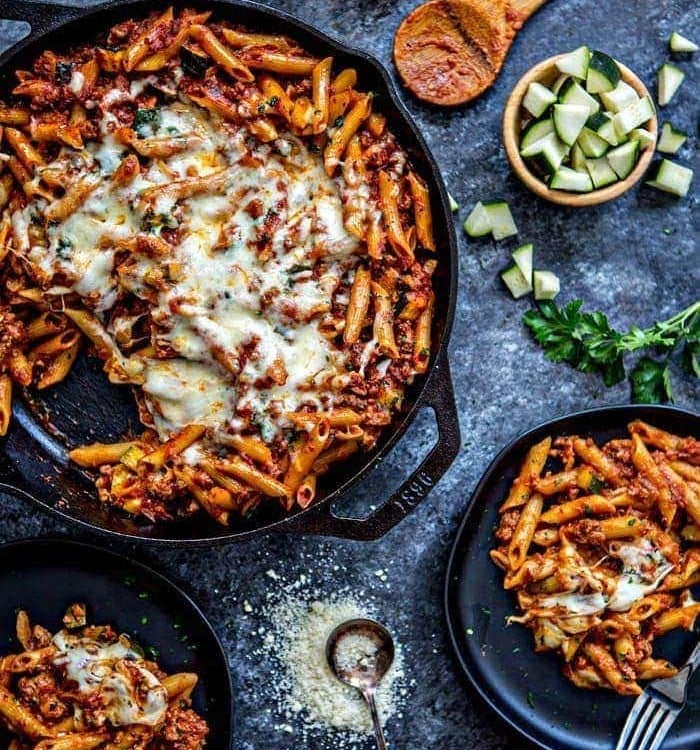
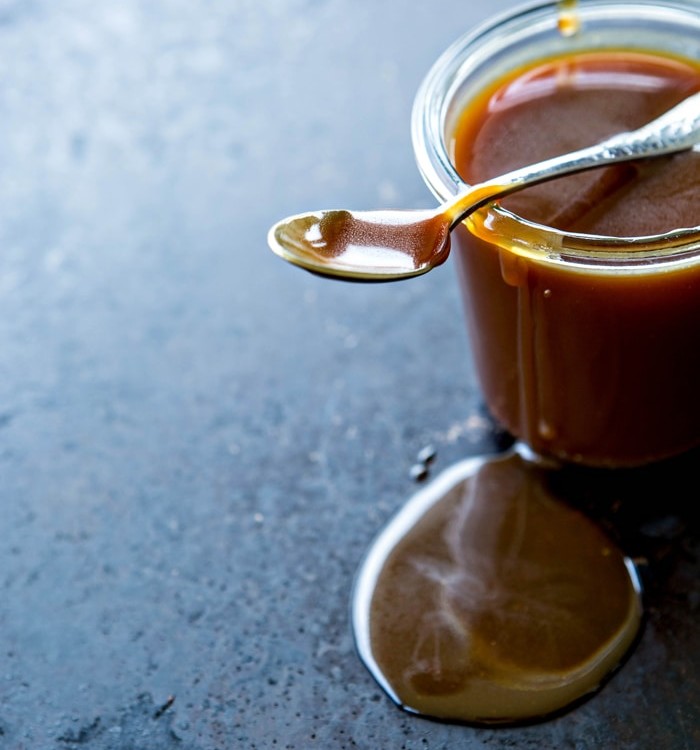
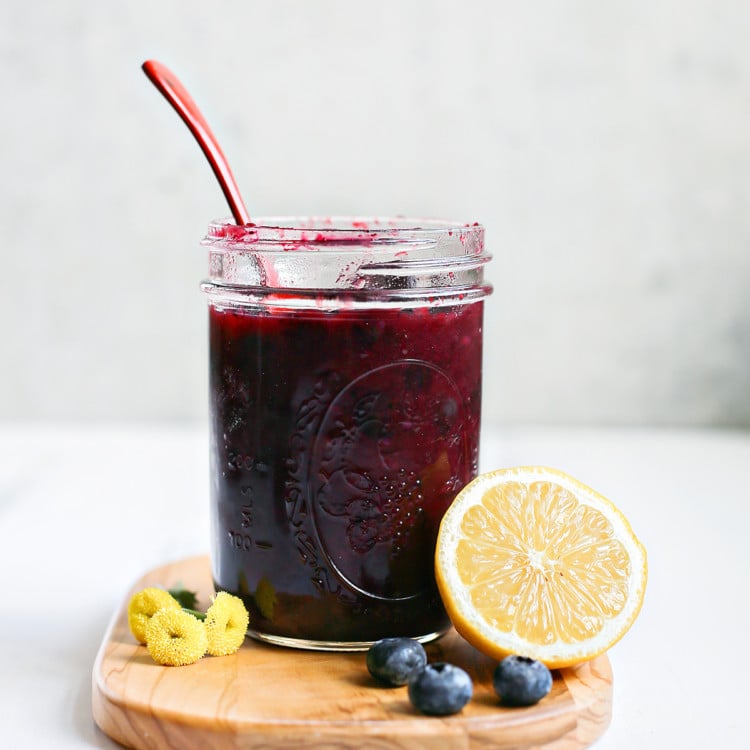
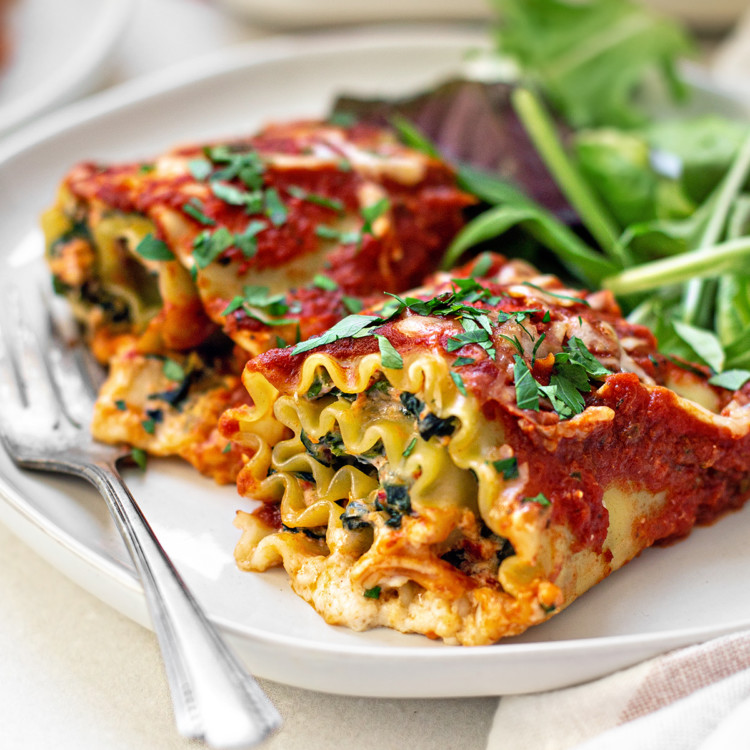

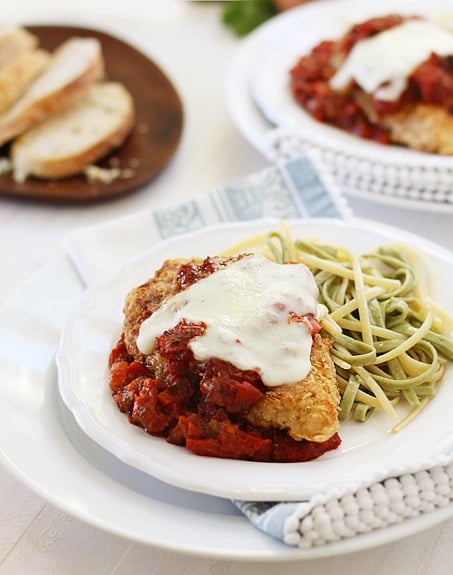

Tamara Sigman says
Seems like a LOT of oil?? 1/2 cup??
Katie says
Feel free to use less if you’d like. You’re using a total of 168 ounces of tomatoes and the oil is only 4 ounces, so it doesn’t make a large part of the completed dish.
TobyD says
Again – made a batch of this fabulous marinara – I cannot get enough of it! Had it with eggplant parmesan tonight. Previously made it into a meatsauce!! Leftovers going in freezer!! Thank you!Toby
Katie says
That sounds great! We haven’t used it for eggplant parmesan before but we just had chicken parmesan with it this week – one of our favorite uses! I’m so glad you like it as much as we do. Its worth the time it takes! Last time I made a double batch in two large pots so I have tons stashed in the freezer. Thanks so much for stopping by. Have a great day!
Mallory says
Does emitting the wine immensely take away from the flavor of the sauce? Is there something else that can be substituted?
Katie says
I haven’t tried any other substitutes. Is the concern related to the alcohol or something else? With the length of time the sauce will cook the alcohol content will be cooked off.
Jess says
Hi,
I was wondering if this could be done in a slow cooker rather than on the stove top?
Thanks!
Katie says
I have not tried it in the slow cooker before. My concern with that is the condensation that builds up and adds liquid to the marinara sauce vs the stop top you have a lot of liquid evaporation which is necessary. If I was going to experiment with the slow cooker, what I would do is prepare it first up to step #6 where you bring the tomato mixture to a simmer. After that, I would transfer it to a slow cooker and probably experiment with cooking it on high with the lid off so that some evaporation can occur. If, when watching it, I found that the sauce was boiling too much on high then I would test turning it down to low after a period of time. I would still make sure to stir periodically to avoid a burnt bottom. I hope that helps! Like I mentioned, I haven’t tried this but that is what I would try if I were to adapt to a slow cooker. Let me know if you do and how it works out and I’ll be sure to update this post with slow cooker info when I try it that way myself. Good Luck!
Sonia says
Can I use fresh tomatoes( blanched ) instead of canned ones ?
Katie says
I actually haven’t made it that way yet, but I imagine that you can. I would make sure to skin the tomatoes and then crush in food processor. Let me know how you like it because I’ve been wanting to try with fresh tomatoes.